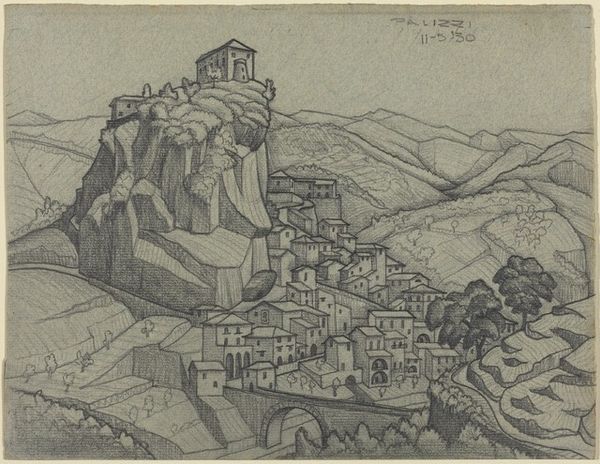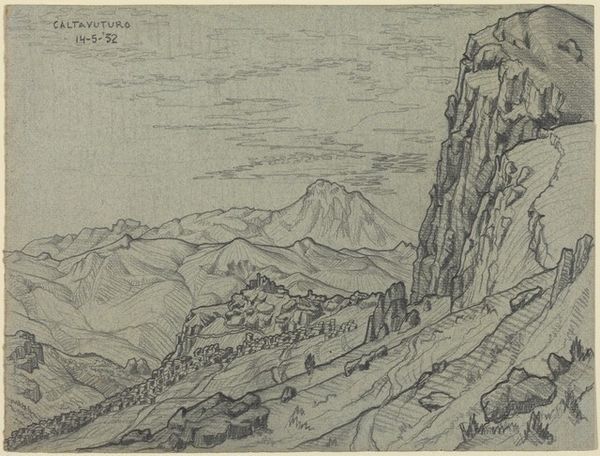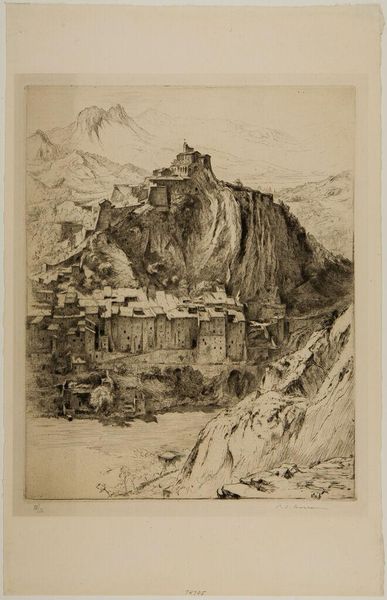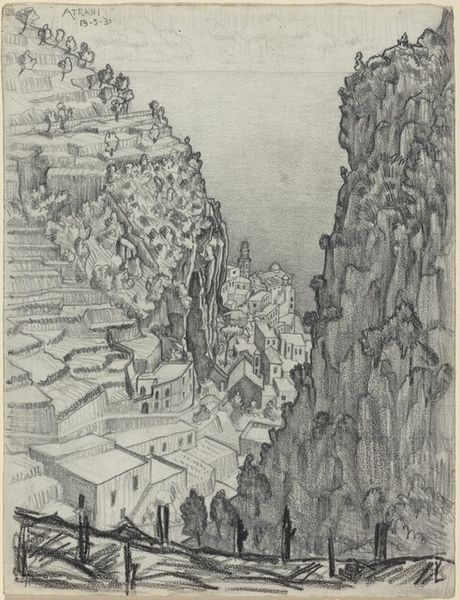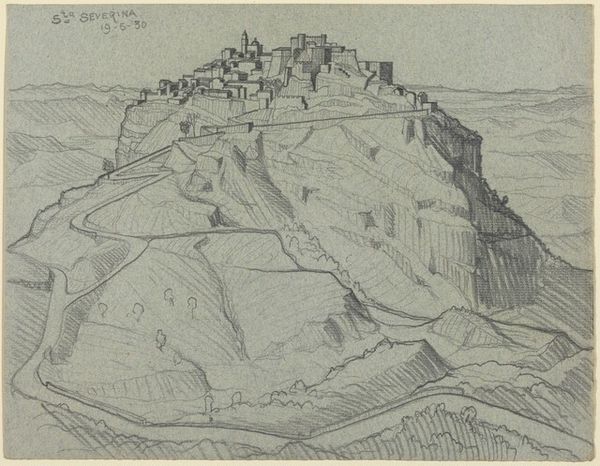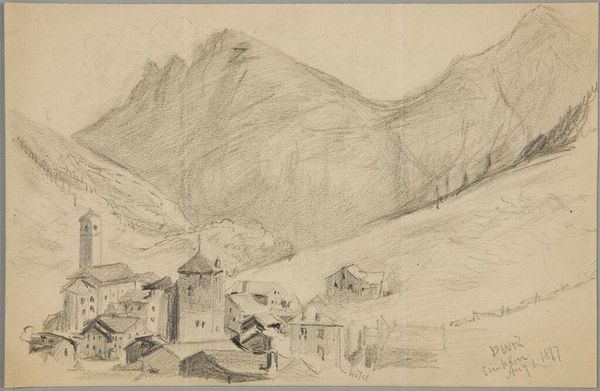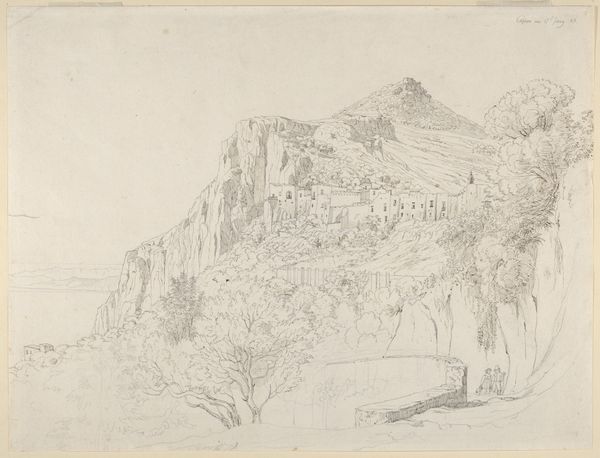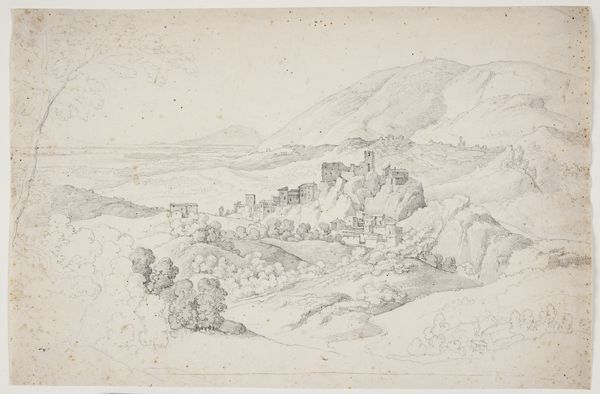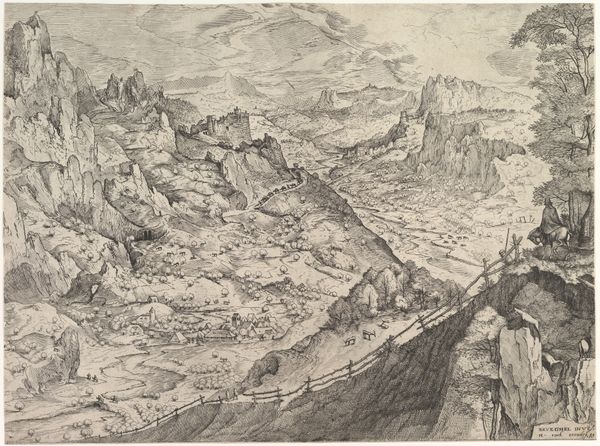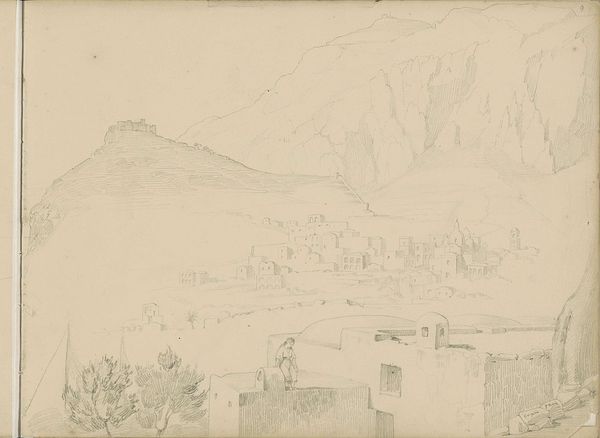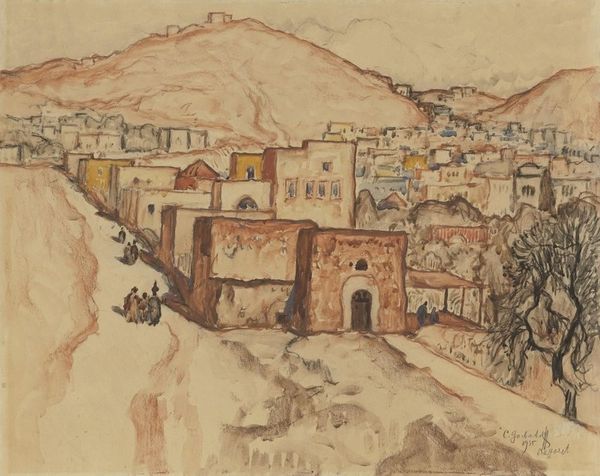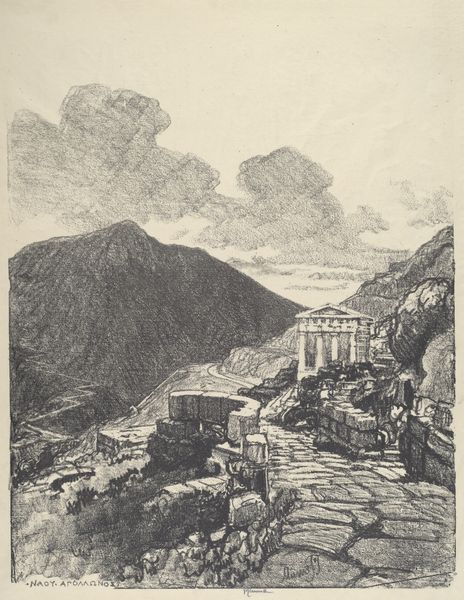
drawing, pencil
#
drawing
#
landscape
#
pencil
#
cityscape
#
realism
Dimensions: overall: 24 x 31.9 cm (9 7/16 x 12 9/16 in.)
Copyright: National Gallery of Art: CC0 1.0
Curator: We're looking at M.C. Escher's "Nicosia, Sicily," a pencil drawing completed in 1932. Editor: What immediately strikes me is the raw, almost monumental quality of this landscape. The density of the rock formations practically pulsates with a primordial energy. Curator: Indeed, Escher wasn't simply recording the landscape, he was investigating structure and texture. Consider the very visible mark-making; you can almost feel the graphite being laid down, layer upon layer, to create this sense of geological heft. There's a dialogue here between representation and the physical act of drawing. Editor: I see it as less about process and more about the cultural memory embedded in these old cities. Look how the buildings seem organically grafted onto the mountain, suggesting an ancient relationship between the community and its land, a reliance, a kind of protective symbiosis, one shelters the other. It suggests something timeless, beyond mere construction. Curator: Yet that "organic" look is deliberate. Escher is keenly aware of how human hands have shaped even seemingly natural forms. The terraced fields, the way buildings are positioned to minimize material waste – all reveal a sophisticated understanding of resources and labor. The constraints inform the final form. Editor: Constraints maybe, but I see deep symbols: the precariousness of human existence against the steadfast mountain, a kind of enduring faith reflected in the repeated architectural forms. Think about the weight those symbols would carry, particularly in the shadow of approaching European turmoil. It’s a potent statement about survival. Curator: I am drawn to the economic practicality implied within these tightly grouped structures. How much social capital lies in community support when available resources are stretched thin? Editor: Perhaps we see different sides of the same coin: resilience manifested both in social organization and the visual echoes of collective experience etched within the landscape. Escher seems to be capturing both the practical realities and the spiritual dimensions. Curator: It makes you wonder, what materials went into their structures, who sourced the stones and how was that labor allocated? Editor: And the weight those stones carry, not just physically, but symbolically, binding them to generations past and future. Food for thought, indeed.
Comments
No comments
Be the first to comment and join the conversation on the ultimate creative platform.
